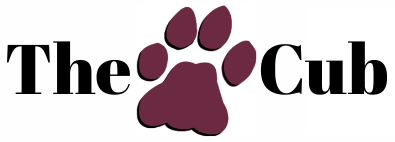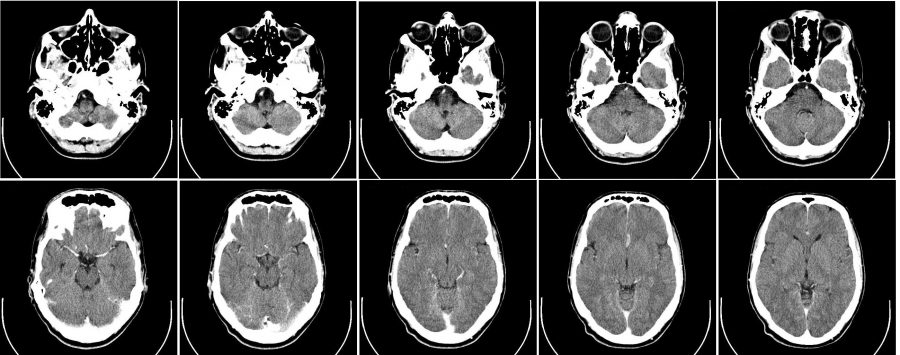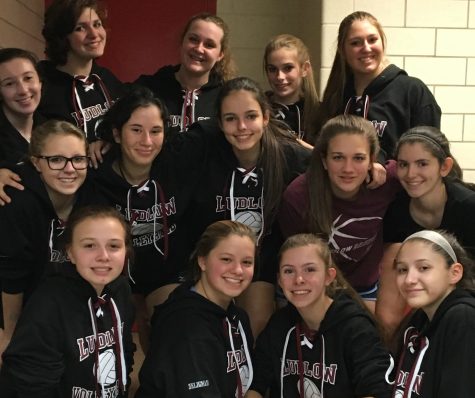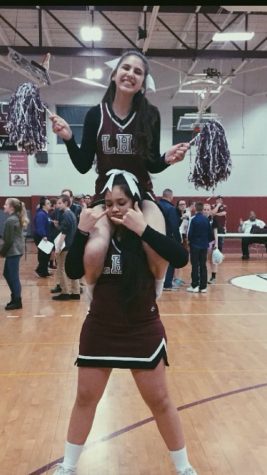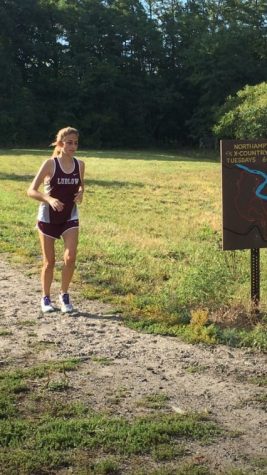Concussions in gym class affect students’ athletic careers
November 3, 2016
Next time you are in gym class and somebody yells “heads up” you might want to heed their warning. No fewer than three students had to miss out on part of their athletic season this fall after sustaining concussions due to being hit in the head during PE class.
During the football unit at Ludlow High, sophomores Emily Mullin and Ashley Navarro along with junior Shakhira Ibanez were diagnosed with concussions; two took a football to the head and one fell while trying to make a reception. All three athletes were forced on the bench, and their head injuries could impact their athletic careers.
Concussions are brain injuries caused by sudden impact to the head. These injuries alter the way the brain functions, which can cause long term issues involving attention and memory. Common signs of a concussion include dizziness, nausea, headaches, and sometimes even unconsciousness. Someone with a concussion may act irritable or have trouble concentrating on tasks.
There are small tests that trainers and doctors use to determine whether or not an athlete has a concussion. An example of a basic test is having the student follow a pen with their eyes. If they drop their eyes when the pen is raised then they are sensitive to light. If the student moves their head rather than only following the pen with their eyes, then they may have a concussion. Simply having the student stand straight for 30 seconds is a way to test balance. If the student rocks or needs to hold their hands out for assistance, then they are struggling with balance, a sure sign of a concussion.
If a student may possibly have a concussion, then asking them exactly what happened prior to the head injury is a way to test memory. They should be able to recall exactly what happened. Also, asking them the date and time is commonly done to test memory.
Beginning in May 2009, states developed Return to Play laws stating that athletes need to fully recover from their head injuries before they are allowed to return to playing sports. Therefore, students now need to take an impact test that will determine whether or not the student has recovered. Their scores on the test along with the amount of time taken to complete the test determine whether or not the athlete does in fact have a concussion. If the student scores significantly lower on the test than they did prior to getting a concussion, then they are not healed and cannot return to their sport.
Even when an athlete is healed, they need to ease back into the sport they play. They begin by doing light exercise while their team is practicing.
The Runner
Sophomore cross country runner Emily Mullin was hit in the head with a football in gym class on September 26. The result of this incident was a concussion.
For two hours after the ball hit her, Mullin kept quiet about the constant headaches and nausea that she felt. Finally, she decided it was best to report the problem.
Mullin went to Ashley Maurao, the physical trainer and passed the simple concussion test. “I had no actual symptoms other than sensitivity to light and sound, headaches, and dizziness. I did not have any cognitive or other physical issues,” Mullin reports. However, Mullin still suffered from a constant pounding headache, landing her in a doctor’s office where she was told that she did in fact have a minor concussion.
Mullin spent about three weeks without running for the schools cross country team because she could not take part in any physical activity. Over a month had passed now and she is still going through the process of Return to Play. “I have to gradually increase physical activities because I’m going from doing nothing to doing actual exercise.” Mullin explains. She said that it is still difficult to return to the constant running involved in cross country after so long.
During her recovery time, Mullin spent long, uneventful days at home where she was not able to keep up with school work or be active in any way. Her favorite pastime was to listen to audiobooks because it required minimal use of the brain. She also had plenty of time to catch up on sleep during her concussion.
The Cheerleader
About a month and a half ago in cheerleader Ashley Navarro’s sophomore gym class, the teacher was giving instructions on how to play flag football. Meanwhile, a friend of Navarro playfully threw a football at her. Navarro was unaware of the fact that the football was heading in her direction when the ball hit Navarro in a sensitive part of her head, resulting in an concussion.
Navarro, instantly feeling a sharp pain in her head, went straight to the nurse. During this visit Navarro experienced dizziness, trouble with balance, nausea, and sensitivity to light. The nurse decided to send her to a doctor, who confirmed that she had a concussion. The result: a one month absence from cheerleading.
Navarro missed cheerleading a lot during the month that she was out. “I was really upset but I’m happy to get back now and practice a little here and there” said Navarro.
Her teammates missed having her on the team as well. Sophomore Ariana Ortiz, who has been cheering with Navarro for about a year now, said that they lost one of their competitions because of Navarro’s absence.
It was a difficult adjustment for the team regarding their routines. Navarro explains that they “can’t just substitute someone in like in other sports. We need everyone there to help put the routines together.” Nobody could take her place, so the team had to rearrange the routines to make up for the missing cheerleader.
Navarro speaks a little about her coaches and says “they were caring and concerned about me. However, they were really upset.” It’s natural for the coaches to feel stressed about one of their girls being injured. They had a lot on their hands when they had to figure out how to make up for the month that Navarro was unable to cheer.
Navarro still went to each and every cheerleading practice to support her team and help in any way she could. She gave the newer girls confidence so they could take her place in the routines. Now, Navarro is back and ready to cheer. She described a five day return plan that the trainer set up for her. This includes minimal exercise such as running and trying to do some jumps while her team practiced routines. Navarro made her first appearance back in cheerleading at the football game last Friday.
It has been a difficult journey to get back into cheerleading. Ortiz says that it’s different to have Navarro back because the team “changed a lot of things and now she needs to learn the new routines.”
Her absence from cheerleading was not the only thing Navarro needs to make up for. Getting back into school has been a lot of work too. When asked about her current grades, Navarro gave a slight chuckle and admitted that she has a few zeros in her classes. “I’m not allowed to take any quizzes or tests and for a while I couldn’t do homework” she explains.
The Hitter
Junior outside hitter on the JV volleyball team, Shakhira Ibanez, also suffered from a concussion during the football unit in gym class.
In late September, Ibanez was playing as a wide receiver. She was running down the line, expecting to catch the ball and score the touchdown. Instead, she tripped to the ground, hitting her head on someone’s knee.
“It hurt a lot,” Ibanez says. She instantly had a severe headache, so she went to the nurse to see how serious her injury was. The nurse checked to see if Ibanez showed any of the symptoms of a concussion. Along with the headache, Ibanez felt slight dizziness and nausea, leading the nurse to believe that it was a mild concussion. Ibanez was sent to the doctor, who came to the same conclusion.
Ibanez spent four long weeks without playing volleyball, which was devastating for her and her team. Her coach, Zachary Richer, says “I was disappointed and I felt bad for her. As a coach, I never want to hear about one of my players getting injured because it’s such a varied thing.” He went on to explain that some people are lucky enough to recover very quickly, but that was not the case for Ibanez. It took her about a month to recover.
Ibanez’s presence on the court was something the team missed most during her absence. “She always brought positivity,” says Richer.
Even though Ibanez was not able to bring her positivity onto the court, she still went to many of the games to support her team. Naturally, Ibanez felt a little frustrated while watching her team play, especially during the more difficult games. “I feel like I’m not useful because I’m just sitting on the bench watching my team play.”
Despite the frustration, Ibanez kept her head up and helped her team in any way she could. “I’ll always be there for my team,” she says with a big smile.
Once the four weeks was up and Ibanez was completely recovered, she excitedly jumped back into things. She was able to play with her Junior Varsity team during their last week of the season.
Nationwide, people have been trying to raise concussion awareness. This fall, the girls varsity volleyball team wore bright orange sweatbands on their ankles to one of their games to promote concussion awareness.
Although there is no way to completely eliminate the possibility of concussions in sports, athletes wear head protection in full impact sports such as football and hockey.
New rules have been added to other sports to help prevent head injuries. In soccer, athletes 10 years or younger are not allowed to do head balls in any circumstance. Athletes between the ages 11 and 13 an only do head balls in practices, and not in games. If a player deliberately heads the ball during a game, then the opposing team is rewarded with an indirect kick from the spot at which he incident occured.
Concussions have become a major issue over the past few years. On top of the fear of head injuries from sports, the students of Ludlow High school now need to worry about getting concussions during gym class.
